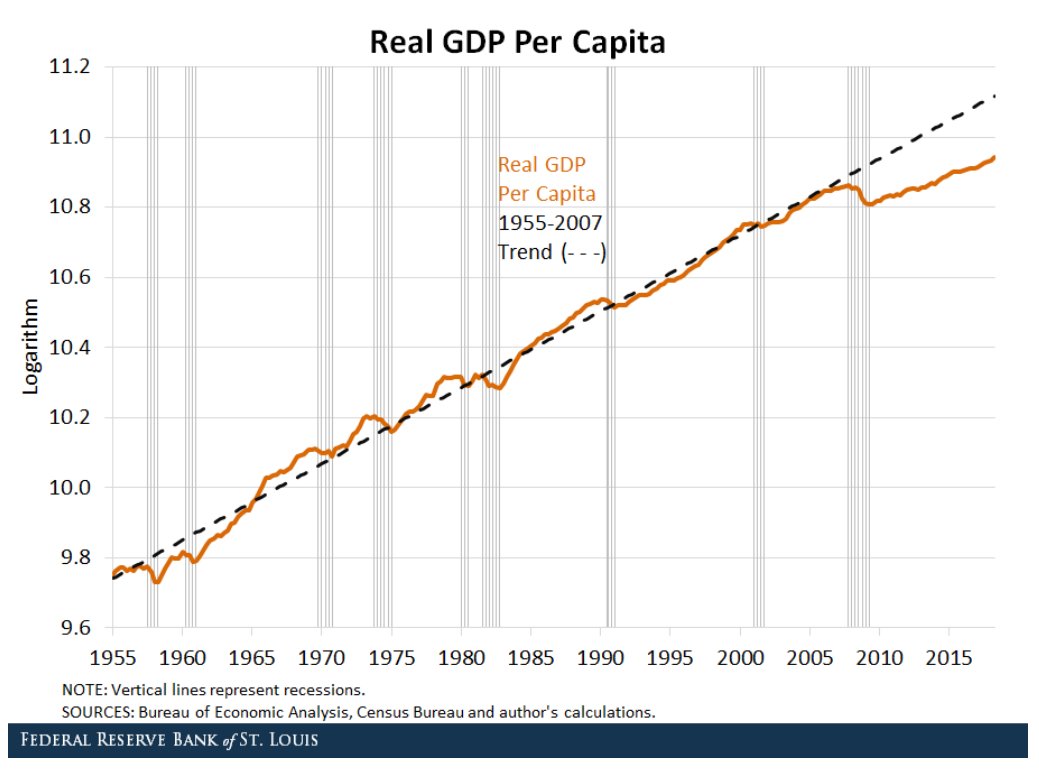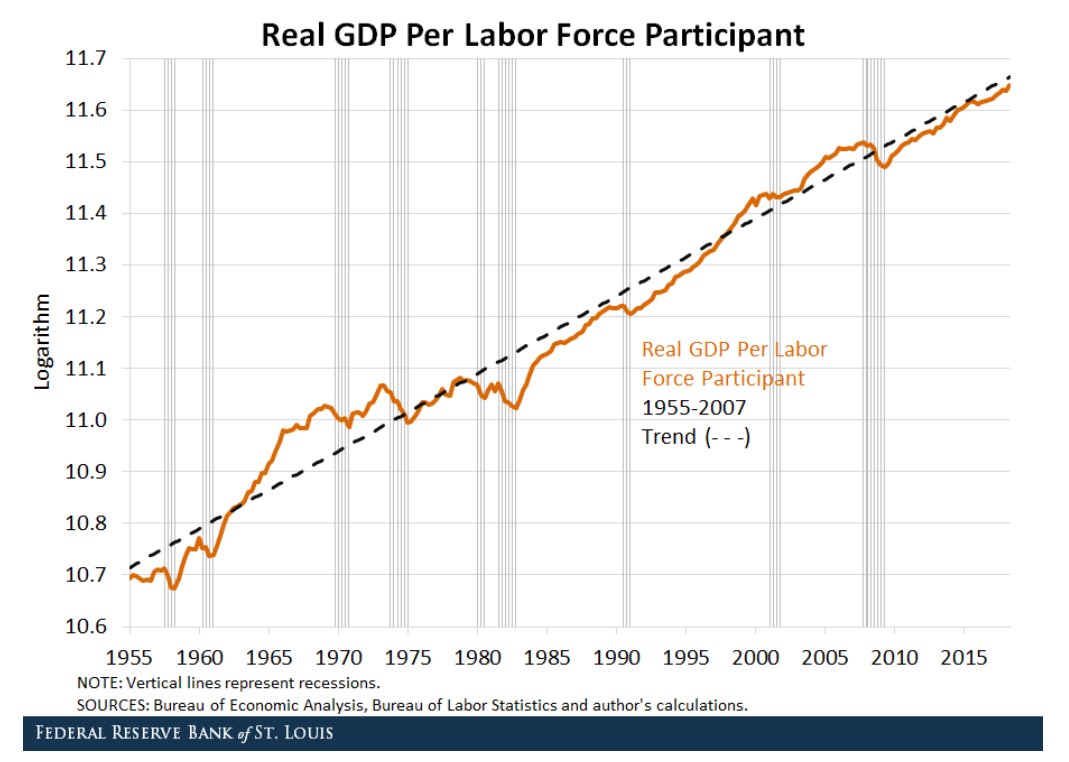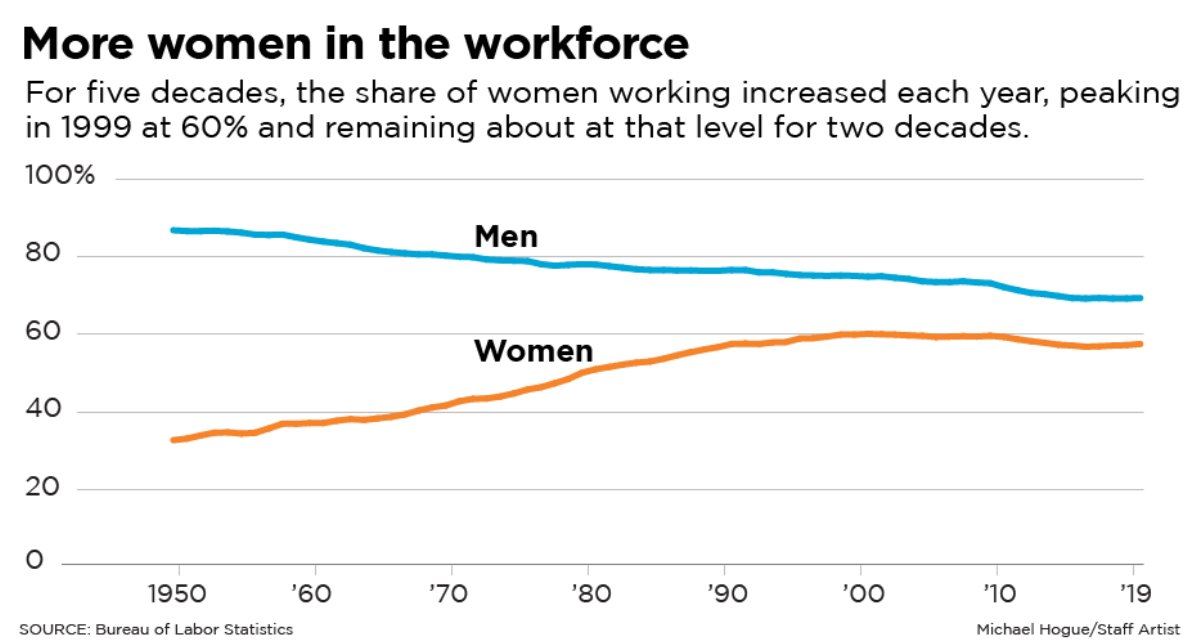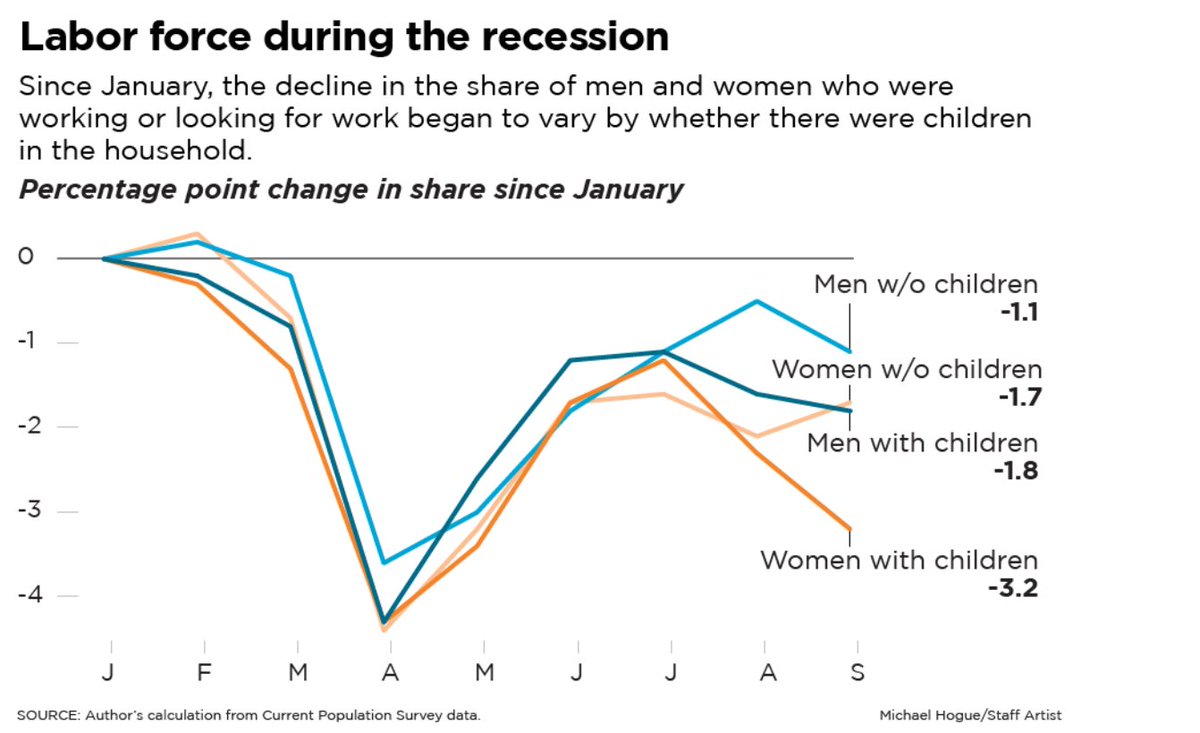Yesterday my first commissioned op-ed ran in the Dallas Morning News.
In it, I outline why economic recovery from this recession should include comprehensive child care, from ages 0-18.
(thread for more!) https://www.dallasnews.com/opinion/commentary/2020/11/22/women-are-leaving-the-labor-force-in-record-numbers/">https://www.dallasnews.com/opinion/c...
In it, I outline why economic recovery from this recession should include comprehensive child care, from ages 0-18.
(thread for more!) https://www.dallasnews.com/opinion/commentary/2020/11/22/women-are-leaving-the-labor-force-in-record-numbers/">https://www.dallasnews.com/opinion/c...
The labor force participation rate is the share of the population that is either a) working or b) looking for work (aka unemployed).
People who have no intention of working, like students or retirees, are not in the labor force.
1/
People who have no intention of working, like students or retirees, are not in the labor force.
1/
Labor force participation defines what the maximum sustainable economic growth rate can be.
This is easy to visualize.
After the last recession, per capita GDP growth fell below it& #39;s six-decade trend.
2/
This is easy to visualize.
After the last recession, per capita GDP growth fell below it& #39;s six-decade trend.
2/
But in fact, it remained on its *per participant* trend.
GDP growth is a function of the number of people working.
3/
Source: https://www.stlouisfed.org/on-the-economy/2018/august/gdp-labor-force-participation-economic-growth">https://www.stlouisfed.org/on-the-ec...
GDP growth is a function of the number of people working.
3/
Source: https://www.stlouisfed.org/on-the-economy/2018/august/gdp-labor-force-participation-economic-growth">https://www.stlouisfed.org/on-the-ec...
For about forty years, GDP growth in the US was greatly bolstered by a disproportionately large generation that was working age (Boomers) and women& #39;s increase in participation.
Here& #39;s a good write up of that:
https://www.frbsf.org/economic-research/publications/economic-letter/2007/november/labor-force-participation-us-growth/
And">https://www.frbsf.org/economic-... a visual of women& #39;s labor force:
4/
Here& #39;s a good write up of that:
https://www.frbsf.org/economic-research/publications/economic-letter/2007/november/labor-force-participation-us-growth/
And">https://www.frbsf.org/economic-... a visual of women& #39;s labor force:
4/
So where are we in 2020?
At a breaking point.
Women& #39;s increase in work from the 1970s-1990s was not the result of a policy change or a big investment. Instead, it was the result of a "quiet revolution" in women& #39;s identity and careers.
5/
At a breaking point.
Women& #39;s increase in work from the 1970s-1990s was not the result of a policy change or a big investment. Instead, it was the result of a "quiet revolution" in women& #39;s identity and careers.
5/
Women shifted from viewing work as temporary (until marriage or childbirth) or secondary (to their husband& #39;s preferences or to their roles as wives). They wanted careers. And work became part of their identity.
Claudia Goldin explains this very well:
https://scholar.harvard.edu/files/goldin/files/the_quiet_revolution_that_transformed_womens_employment_education_and_family.pdf
6/">https://scholar.harvard.edu/files/gol...
Claudia Goldin explains this very well:
https://scholar.harvard.edu/files/goldin/files/the_quiet_revolution_that_transformed_womens_employment_education_and_family.pdf
6/">https://scholar.harvard.edu/files/gol...
But there& #39;s a limit to how far identify can get us, and that limit is called child care.
The pandemic has resulted in child care and school closures, and a coincidental decline in women& #39;s labor force participation.
7/
The pandemic has resulted in child care and school closures, and a coincidental decline in women& #39;s labor force participation.
7/
And this makes sense, there is lots of evidence of the inverse:
Even marginal increases in free child care increase women& #39;s labor force participation.
(Since the U.S. has made so little investment in child care, much of the evidence comes from other countries.)
8/
Even marginal increases in free child care increase women& #39;s labor force participation.
(Since the U.S. has made so little investment in child care, much of the evidence comes from other countries.)
8/
Here& #39;s a sample:
(and if I missed a paper you like, please reply and add it!)
https://wol.iza.org/articles/do-childcare-policies-increase-maternal-employment/long
https://wol.iza.org/articles/... href=" https://onlinelibrary.wiley.com/doi/full/10.1002/soej.12459
https://onlinelibrary.wiley.com/doi/full/... href=" http://ftp.iza.org/dp9212.pdf
9/">https://ftp.iza.org/dp9212.pd...
(and if I missed a paper you like, please reply and add it!)
https://wol.iza.org/articles/do-childcare-policies-increase-maternal-employment/long
9/">https://ftp.iza.org/dp9212.pd...
So:
1) labor force participation is a bedrock of economic growth
2) women& #39;s labor force participation has declined sharply this recession
3) increasing access to free child care increases women& #39;s labor force participation
4) we& #39;ve never made that investment in the U.S.
10/
1) labor force participation is a bedrock of economic growth
2) women& #39;s labor force participation has declined sharply this recession
3) increasing access to free child care increases women& #39;s labor force participation
4) we& #39;ve never made that investment in the U.S.
10/
Appropriate and effective economic policy to recover from this recession is to invest in child care policy, from age 0-18:
Paid family leave
Free, locally available child care
Preschool starting at age 3
Longer school day.
11/
Paid family leave
Free, locally available child care
Preschool starting at age 3
Longer school day.
11/
If that sounds radical, I would argue 2020 has already been radical for many working parents.
As you can see in many of these stories:
https://www.newyorker.com/news/q-and-a/why-the-pandemic-is-forcing-women-out-of-the-workforce
https://www.newyorker.com/news/q-an... href=" https://www.usatoday.com/story/news/politics/elections/2020/08/03/coronavirus-pandemic-sets-women-back-amid-unemployment-child-care-crisis/5573123002/
https://www.usatoday.com/story/new... href=" https://www.nytimes.com/2020/11/17/business/economy/women-jobs-economy-recession.html
https://www.nytimes.com/2020/11/1... href=" https://www.washingtonpost.com/road-to-recovery/2020/11/06/women-workforce-jobs-report/
https://www.washingtonpost.com/road-to-r... href=" https://www.essence.com/articles/working-black-mothers-childcare-covid-19/
12/">https://www.essence.com/articles/...
As you can see in many of these stories:
https://www.newyorker.com/news/q-and-a/why-the-pandemic-is-forcing-women-out-of-the-workforce
12/">https://www.essence.com/articles/...
Or these:
https://www.npr.org/2020/10/28/928253674/stuck-at-home-moms-the-pandemics-devastating-toll-on-women
https://www.npr.org/2020/10/2... href=" https://www.npr.org/2020/10/20/924566058/even-the-most-successful-women-are-sidelining-careers-for-family-in-pandemic
https://www.npr.org/2020/10/2... href=" https://www.npr.org/2020/11/12/929551120/i-come-up-short-every-day-couples-under-strain-as-pandemic-upends-life-at-home
https://www.npr.org/2020/11/1... href=" https://www.npr.org/2020/10/26/925898367/incredibly-scary-single-moms-fear-falling-through-holes-in-pandemic-safety-net
https://www.npr.org/2020/10/2... href=" https://www.npr.org/2020/11/05/930285956/these-women-built-careers-in-retail-the-pandemic-tore-through-their-stores
https://www.npr.org/2020/11/0... href=" https://www.npr.org/2020/10/27/927793195/something-has-to-give-latinas-leaving-workforce-at-faster-rate-than-other-groups
https://www.npr.org/2020/10/2... href=" https://www.npr.org/sections/coronavirus-live-updates/2020/10/02/919517914/enough-already-multiple-demands-causing-women-to-abandon-workforce
https://www.npr.org/sections/... href=" https://www.npr.org/2020/09/29/918127776/this-is-too-much-working-moms-are-reaching-the-breaking-point-during-the-pandemi">https://www.npr.org/2020/09/2...
https://www.npr.org/2020/10/28/928253674/stuck-at-home-moms-the-pandemics-devastating-toll-on-women
Or that the Chairmen of the Federal Reserve said his biggest worry about the economy was that women were getting shoved out.
https://www.cnbc.com/2020/11/13/fed-chair-concerned-about-covid-pandemic-effects-on-women-children.html
/n">https://www.cnbc.com/2020/11/1...
https://www.cnbc.com/2020/11/13/fed-chair-concerned-about-covid-pandemic-effects-on-women-children.html
/n">https://www.cnbc.com/2020/11/1...

 Read on Twitter
Read on Twitter





